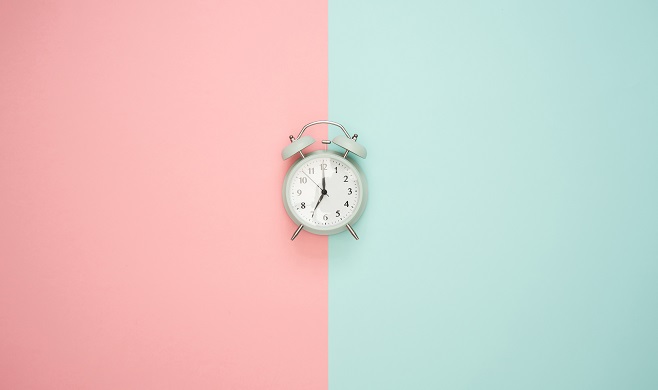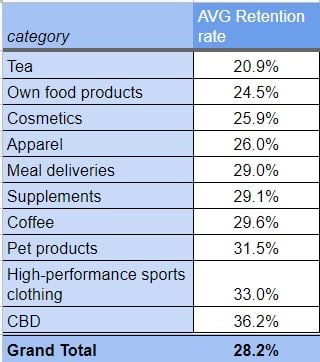
Repeat purchase rate for ecommerce brands
If you have an unlimited pool of potential customers and also unlimited budget to acquire them, this article is not for you. Your shop can survive with one-time sales.
If your target audience or budget, though, is not so huge, you need a high repeat purchase rate to stay in business.
Why is repeat purchase rate important?
Repeat orders mean higher profitability on each acquisition paid. If your CAC is $5 and customer lifetime value is only $15, you make $10. But if customer lifetime value went up to $40, you’re making $35. You could even spend a bit more, say $10, to acquire other segments of customers who’d spend $75 customer lifetime value. The higher the repeat purchase rate, the higher the ROI.
More about the power of high LTV in ecommerce
The fact that people buy from you repeatedly also means they like the product – there’s product-market fit. You have found the right audience and the product works. Like many entrepreneurs, Moiz Ali from Native struggled in the beginning, “I knew we had a mediocre product because nobody would buy again.”
Read more about Native’s tactics for success
Repeat orders mean people are loyal to your brand and probably even spread word-of-mouth about you. The more devoted they are, the stronger your community grows.
And finally, when you know that 40% of your customer base will shop this month, it’s steady stream of revenue and a solid ground for sales forecasts.
How is repeat purchase rate calculated?
Generally, the repeat purchase rate is what share of customers buy more than once.
It makes it easy to compare one-time buyers and repeat customers. It is calculated as the ratio between number of repeat buyers and the total number of customers. Of course, it can be calculated for a period of time or all-time.
RPR = Repeat buyers number/ Total number of buyers
Strategies to increase repeat purchase rate
If you’re not doing so well, here are several ways to stimulate repeat orders:
- Find out what products drive repeat orders and promote them heavily. They are your true MPVs because they inspire loyalty.
More about The Superstar product technique
- Identify the campaigns that bring in customers who later realize high repurchase rate, and do more of them. Apparently, such campaigns attract long-term customers.
- Send reminder emails when people are statistically ready to buy again (Metrilo measures your Average Time between Orders – TBO). This is a nice stimulus at a good time and won’t be seen as pushy by customers. For even more conversions, include a link to the product they bought before (if suitable for reordering) to take away any friction.
Related: How Retention Analysis can help your brand
- If your products are not exactly suitable for reordering (like clothes or jewelry), you can still send retention email campaigns with similar products. Segment your customer base into different categories of style as they’ve shown through their shopping behavior – trend seekers, classic lovers, mom-and-baby fans, etc.
Read more about customer segmentation
- You can also offer the same product they bought before in different variants – summer and winter editions, for example.
- Actively use feedback to engage people for longer. Take ideas for new products and involve them in the naming, choosing of colors, etc. When people are part of the process and feel connected to the brand, they stay loyal.
Related: How to use customer feedback
- Include a coupon for next order in the box. Unboxing is a very important point of interaction for DTC brands so it’s worth investing in. Every aspect of it should be well planned so the customer gets the perfect impression every time, not just the first!
Repeat purchase rate benchmarks by industry
Recently, we at Metrillo did research on customer retention among ecommerce brands and we discovered that the average repeat purchase rate is 28,2%.
Note: The research is conducted among clients of ours that consented to participating so these are companies already using Metrilo’s tools to increase their customer retention).

The product category with the lowest repeat purchase rate turns out to be tea with 20,9%. We got one possible explanation from WOW Tea, a client of ours that used to struggle with low customer retention. They told us seasonality is huge with tea since most people drink it for health and slimming benefits, usually before the summer, and then stop. This particular tea brand managed to increase their repeat purchase rate with customer segmentation and careful tailoring of emails to stimulate longer use of their products.
Meal deliveries (29%) and supplements (29,1%) are the first categories with a repurchase rate above the survey average, doing better than stand-alone food products, cosmetics and apparel. That looks very well for products supposedly built for continuous and regular use, even fit for subscriptions.
High-performance sports clothing gadgets like the Onewheel Accessories are worth a mention with its repeat purchase rate of 33%. Niche products with smaller markets should focus on customer retention to ensure a steady cash flow.
And the ultimate winner in customer loyalty are CBD products with the amazing 36,2% repeat purchase rate. We know it’s a controversial product, but any ecommerce brand would like to mimic their success, right?
Read the whole Customer retention report
Build and grow your ecommerce brand
Metrilo’s mission is to help you build your ecommerce brand and win your place in the customer’s heart. We share what we learn from our daily work with product innovators and founders here. Subscribe to our weekly newsletter to get the freshest lessons and conquer your niche.
We promise, no spam.
Thank you for subscribing!
See you soon :-)



